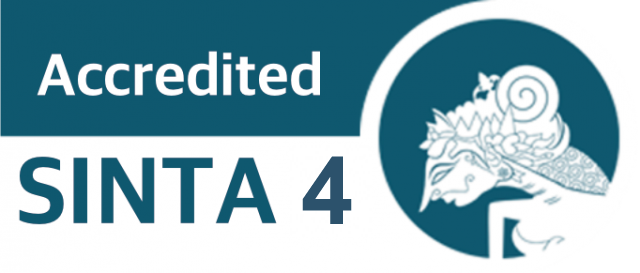Development of Problem-Based Learning Integrated Sasambo Ethnochemistry in Colloid-Based Chemistry Teaching Materials
DOI:
10.29303/jpm.v19i6.7989Published:
2024-11-30Issue:
Vol. 19 No. 6 (2024): November 2024Keywords:
Ethnochemistry Textbook; Feasibility Analysis; Validity of Teaching MaterialsArticles
Downloads
How to Cite
Downloads
Metrics
Abstract
This research aims to determine the feasibility of product development for colloid-based chemistry teaching materials and problem-based learning integrated with Sasambo ethnochemistry to increase students' chemical literacy. This research is part of a development research procedure that adopts the 4-D model, with stages to define, design, develop, and disseminate. Test the suitability of teaching materials using a questionnaire to test content validity and construct validity. And reliability. The content and construct validity analysis technique uses the V index, while the reliability of teaching materials uses the kappa moment coefficient (K). The content and construct validity analysis results showed that the criteria were very valid, with a V index of 91.36% and 90.7%. The reliability analysis results of teaching materials obtained a kappa moment coefficient (K) of 0.88 with a very high reliability category. Based on the validity and reliability values, it is concluded that colloid-based chemistry teaching materials and problem-based learning Sasambo's integrated ethnochemistry are very suitable for learning.
References
Depdiknas. (2003). Undang-Undang Nomor 20 Tahun 2003 tentang Sistem Pendidikan nasional Pasal 3 o Titl.
Nahdiah, L., Mahdian, M., & Hamid, A. (2017). Pengaruh Model Pembelajaranpeer Led Guided Inquiry (PLGI) Terhadap Literasi Sains Dan Hasil Belajar Siswa Pada Materi Hidrolisis Garam Siswa Kelas XI PMIA SMAN 3 Banjarmasin. JCAE (Journal of Chemistry And Education), 1(1), 73-85.
Bybee, R., McCrae, B., & Laurie, R. (2009). PISA 2006: An assessment of scientific literacy. Journal of Research in Science Teaching: The Official Journal of the National Association for Research in Science Teaching, 46(8), 865-883.
Winarti, A. (2018). Inovasi Pembelajaran Kimia Berbasis Etnosains.
Imansari, M., Sudarmin, S., & Sumarni, W. (2018). Analisis literasi kimia peserta didik melalui pembelajaran inkuiri terbimbing bermuatan etnosains. Jurnal Inovasi Pendidikan Kimia, 12(2).
Aldiansyah, A., Pasa, J. I., Muttaqin, M. R., Awaliyah, N. N., & Erika, F. (2023). Literatur Review: Keterkaitan Pembelajaran Kimia Terhadap Pendekatan Etnokimia Di Indonesia. CHEDS: Journal of Chemistry, Education, and Science, 7(2), 238-246.
Baker, D., & Taylor, P. C. (1995). The effect of culture on the learning of science in non‐western countries: The results of an integrated research review. International Journal of Science Education, 17(6), 695-704.
Eskrootchi, R., & Oskrochi, G. R. (2010). A study of the efficacy of project-based learning integrated with computer-based simulation-STELLA. Journal of Educational Technology & Society, 13(1), 236-245.
Simon, S., Ottander, C., & Parchmann, I. (2016). Narratives of Doctoral Studies in Science Education. Routledge.
Mutiah, M., & Siahaan, J. (2022). Identifikasi Tingkat Literasi Kimia-Sma Mahasiswa Progdi. Pendidikan Kimia Fkip Unram. Chemistry Education Practice, 5(2), 151-156.
Rahayuni, G. (2016). Hubungan keterampilan berpikir kritis dan literasi sains pada pembelajaran IPA terpadu dengan model PBM dan STM. Jurnal penelitian dan Pembelajaran IPA, 2(2), 131-146.
Gherardini, M. (2016). Pengaruh metode pembelajaran dan kemampuan berpikir kritis terhadap kemampuan literasi sains. Jurnal pendidikan dasar, 7(2), 253-264.
Prastowo, A. (2019). Panduan kreatif membuat bahan ajar inovatif menciptakan metode pembelajaran yang menarik dan menyenangkan.
Nengsih, N. R., Yusmaita, E., & Gazali, F. (2019). Evaluasi validitas konten dan konstruk bahan ajar asam basa berbasis REACT. EduKimia, 1(1), 1-10.
Rahayu, P. Y. (2020). Analisis Valididtas Isi Produk Pengembangan Modul Pembelajaran Kewirausahaan Berbasis Project Based Learning. Jurnal Madani: Ilmu Pengetahuan, Teknologi, dan Humaniora, 3(2), 228-237.
Sandjojo, N. (2013). Uji Validitas dan uji reliabilitas. Diakses pada, 4.
Azwar, S. (2019). Reliabilitas dan validitas.
BNSP., Peraturan Mentri Pendidikan Nasional RI Nomor 41 Tahun 2007 tentang Standar Proses untuk Satuan Pendidikan Dasar d. 2007.
Latisma, D. J. (2011). Evaluasi pendidikan. (2008). Padang: UNP Press Padang.
Depdiknas., Panduan pengembangan bahan ajar. Jakarta: Ditjen Dikdasmen. Direktorat Jenderal Guru dan Tenaga Kependidikan Kementerian Pendidikan dan Kebudayaan.
Suswina, M. (2016). Hasil validitas pengembangan bahan ajar bergambar disertai peta konsep untuk pembelajaran biologi SMA semester 1 kelas XI. Ta'dib, 14(1).
Sitepu, B. P. (2014). Penulisan Buku Teks Pelajaran. Bandung: PT. Remaja.
Mutiah, M. (2021). Analisis Penerapan Problem Based Learning (PBL) untuk Meningkatkan Pemahaman Konsep pada Perkuliahan Kimia Analitik. Jurnal Pijar Mipa, 16(3), 353-357.
Kuantitatif, P. P. (2016). Metode Penelitian Kunatitatif Kualitatif dan R&D. Alfabeta, Bandung.
Akbar. S. (2017). Instrumen Perangkat Pembelajaran, 1st ed. Bandung: Bandung : Remaja Rosdakarya.
Purwanto, N. (2010). Psikologi Pendidikan: Bandung: PT Remaja Rosdakarya. Oemar Hamalik.
Hidayah, N., & Rofi'ah, S. (2021). Pengembangan Bahan Ajar Matematika dengan Berbasis Higher Order Thinking Skills (HOTS) di Kelas VI. el-Ibtidaiy: Journal of Primary Education, 4(1), 120-126.
Daryanto, D. (2013). Menyusun modul bahan ajar untuk persiapan guru dalam mengajar. Yogyakarta: Gava Media, 9-23.
Author Biographies
Yayuk Andayani, Chemistry Education Study Program, University of Mataram, Mataram, Indonesia
Mutiah Mutiah, Program Studi Pendidikan Kimia FKIP Universitas Mataram
Agus Abhi Purwoko, Chemistry Education Study Program, University of Mataram, Mataram, Indonesia
Baiq Fara Dwirani Sofia, Chemistry Education Study Program, University of Mataram, Mataram, Indonesia
Ermia Hidayanti, Chemistry Education Study Program, University of Mataram, Mataram, Indonesia
License
Copyright (c) 2024 Yayuk Andayani, Mutiah Mutiah, Agus Abhi Purwoko, Baiq Fara Dwirani Sofia, Ermia Hidayanti

This work is licensed under a Creative Commons Attribution 4.0 International License.
The following terms apply to authors who publish in this journal:
1. Authors retain copyright and grant the journal first publication rights, with the work simultaneously licensed under a Creative Commons Attribution License 4.0 International License (CC-BY License) that allows others to share the work with an acknowledgment of the work's authorship and first publication in this journal.
2. Authors may enter into separate, additional contractual arrangements for the non-exclusive distribution of the journal's published version of the work (e.g., posting it to an institutional repository or publishing it in a book), acknowledging its initial publication in this journal.
3. Before and during the submission process, authors are permitted and encouraged to post their work online (e.g., in institutional repositories or on their website), as this can lead to productive exchanges as well as earlier and greater citation of published work (See The Effect of Open Access).











